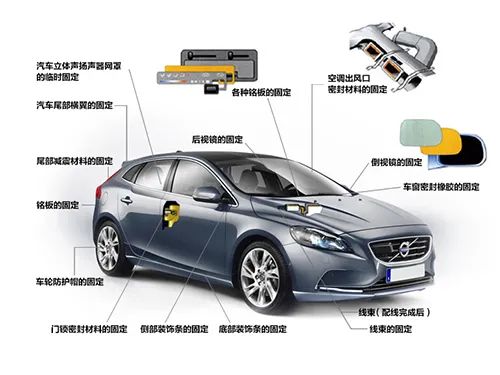With the continuous deepening of automotive electronicization, The use of thin and lightweight printed circuit boards (PCBs) such as LCP (Liquid Crystal Polymer) and PCB (Printed Circuit Board) is increasing, Thin printed circuit boards such as LCP and PCB have higher requirements for copper plating technology, requiring not only good adhesion of the copper plating layer, but also low thickness deviation and good corrosion resistance.
The thickness of LCP and PCB materials is generally below 0.03 mm, and copper electroplating technology is mainly used to meet the coating thickness requirements. Copper electroplating can ensure LCP The coating of PCB has good adhesion with the substrate, but in actual production, due to factors such as electroplating copper process conditions, some products have a thin layer of coating between the copper plating layer and the substrate, resulting in thickness deviation. In addition, the copper plating process can cause defects such as small solder pads, lead holes, and residual copper in the holes on the PCB substrate. Therefore, the thickness of the electroplated copper layer may vary greatly depending on the thickness of the plate, and even cannot be fully covered due to the influence of process conditions. Therefore, it is necessary to consider the actual situation in the design, manufacturing, and other processes.
By analyzing the impact of various links in the PCB production process on the deviation of PCB coating thickness, explore measures to reduce the deviation of PCB coating thickness and ensure the quality of PCB substrate electroplating in the PCB production process. At the same time, the overall electroplating quality can be optimized by adjusting the copper plating process parameters and substrate surface treatment methods.

The application fields of printed circuit boards (PCBs) are very extensive, and their application markets have expanded from high-tech industries such as electronics, communications, networks, and automobiles to ordinary industrial fields. With the trend of miniaturization in electronic products, printed circuit boards are increasingly tending to achieve more functions in smaller spaces.
At present, there are three commonly used manufacturing processes for thin PCBs: reflow soldering, electroplating copper process, and wave soldering technology. Among the three manufacturing processes, electroplating copper process is the most widely used. This process can deposit copper ions on the substrate and obtain good adhesion, ensuring the corrosion resistance of the coating. However, in actual production, it has been found that some products have thickness deviations between the coating and the substrate, resulting in uneven thickness, local thickening or thinning of the coating, which affects its surface quality.
LCP material belongs to special plastic materials, and due to its strength, toughness and other characteristics, its application in the automotive field is becoming increasingly widespread, so the processing requirements for it are also increasing. LCP materials require copper electroplating process to ensure their coating thickness. At present, there are two main methods for electroplating copper: chemical copper plating and electroplating copper.
The electroplating process for LCP, PCB and other products generally includes: cleaning → pre plating → chemical plating (including copper sulfate, nickel sulfate) → water washing → activation → pre plating (including nickel nitrate, nickel sulfate) → activation → pre plating (including hydrochloric acid, chloride) → electroplating.
During the electroplating process, The PCB substrate needs to meet the following requirements: be able to cover the electroplated copper layer and have good bonding strength; There should be no thickness deviation; Surface cleaning; There should be no residual copper.
1. The oxidants, reducing agents, and organic reagents in the copper plating solution can all affect the thickness of the electroplated copper layer, so it is necessary to ensure that the electroplating process parameters meet the product design requirements before electroplating.
2. Due to the thin thickness of LCP, when using mechanical drilling, it is necessary to avoid drilling holes that may cause problems with the coating. For this type of product, manual drilling can be used to remove residual copper inside the hole, and then electroplating copper can be used to solve the problem.
3. When electroplating copper, it is necessary to control the temperature and current density of the plating solution, and do a good job in controlling them to avoid affecting the coating due to high or low temperature or high current density.
4. As electroplating copper is carried out on the substrate, uneven areas on the surface of the copper plating layer should be polished off with a polishing machine.
5. Strengthen the management of waste liquid and wastewater generated during the electroplating process.
In the field of automotive electronics, LCP/PCB production enterprises usually use electroplating copper technology to ensure the adhesion between the coating thickness and the substrate. Products with electroplating copper thickness deviation less than 3 μ m account for 25% to 60% of all LCP/PCB products, among which the most widely used products in the automotive electronics field are 5G base station antenna covers and LCP/PCB PCBs.
This article mainly discusses the use of 5G base station antenna covers Factors affecting the thickness deviation of coatings during the electroplating process of products such as LCP/PCB, and taking the 5G base station antenna cover produced by a certain automotive electronics company as an example for explanation.
The electroplating process of the base station antenna cover includes five steps in the production process: cleaning → electroplating → roughening → degreasing → electroplating. The antenna cover of the base station is acid washed before electroplating, and then copper plated after acid washing.





